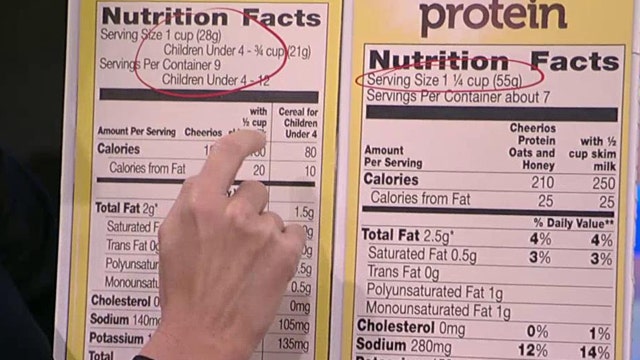The food” target=”_blank”>U.S. Food and Drug Administration (FDA)< in processed, packaged and prepared foods.
The agency aims to cut the average sodium intake by 12% – from 3,400 to 3,000 milligrams a day – over the next two and a half years.
BEHAVIORS THAT COULD CAUSE A HEART ATTACK
“Although the average intake would still be above the Dietary Guidelines for Americans’ recommended limit of 2,300 mg per day for those 14 and older, we know that even these modest reductions made slowly over the next few years will substantially decrease diet-related diseases,” the agency said in a news release.
The guidance is aimed at reducing sodium levels in 163 subcategories of foods.
Center for Food Safety and Applied Nutrition Director Susan T. Mayne and FDA Acting Commissioner Janet Woodcock said in a Wednesday media call that the agency would incrementally make more reductions in the future.
The FDA said it hoped the initiative would become “one of the most significant public health nutrition interventions in a generation,” noting that the U.S. is facing a “growing epidemic of preventable, diet-related conditions like heart-health” target=”_blank”>cardiovascular disease< and nutrition-and-fitness.”
Limiting sodium in diets, it noted, plays a key role in preventing diseases, like hypertension and cardiovascular disease, which disproportionately impact racial and ethnic minority groups, result in the loss of hundreds of thousands of lives and cost billions annually.
The infectious-disease pandemic, the FDA said, has magnified these health disparities, and research shows that Americans consume 50% more sodium than recommended.
What’s more, 95% of children age 2 to 13 years old exceed recommended limits of sodium for their age groups, and the majority of sodium in U.S. diets comes from packaged, processed and food, making it tricky to limit sodium.
The FDA notes that sodium is added to these foods to control microbial growth as well as improve flavor and texture. People “usually don’t notice small reductions” of about 10% in sodium, and taste buds get used to gradual changes, the agency said in an accompanying FAQ page.
Changes sparked by the final guidance, “Voluntary Sodium Reduction Goals: Target Mean and Upper Bound Concentrations for Sodium in Commercially Processed, Packaged, and Prepared Foods,” would make it easier to access lower-sodium options and reduce intake.
The FDA urged that the food industry work to meet short-term goals as soon as possible and said the agency would continue a dialogue with the industry’s members as sodium content of food supply is monitored to evaluate progress.
The agency will work in tandem with other groups, like the U.S. Department of Agriculture and the U.S. Centers for Disease Control and Prevention.
The FDA explained that recommendations were first proposed for reducing sodium content in a 2016 draft guidance and that a number of companies have already made changes to sodium content in their products.
However, additional support across all types of food is needed to help consumers, and an iterative approach with gradual reductions has been effective in other countries, according to the FDA.
Consumers are advised to read food labels, ask for nutrition information at chain restaurants, choose lower-sodium options and speak with their health care providers about healthier foods.
The FDA said its guidance can have a “profound impact” on the health of millions of people.
 Video
Video
“The FDA is committed to playing its part with the tools available to us to help create a healthier food supply, promote healthy habits early and empower consumers to make healthier food choices. We have already taken steps through our Closer to Zero action plan for reducing exposure to toxic elements in foods commonly eaten by babies and young children to the lowest possible levels and have more work ahead using a similar iterative process,” the agency said. “Many of our federal, state and local partners also have initiatives underway that support sodium reduction and help people achieve healthier eating patterns overall. If we act together, we can have a profound impact on the health of millions of people.”
The Associated Press reported that the National Restaurant Association said it had provided feedback to the FDA’s draft guidance and that its member companies continue to provide options that address customer demand.
CLICK HERE TO GET THE FOX NEWS APP
In addition, the outlet noted that the American Frozen Food Institute said member companies have already been offering lower-sodium options to meet consumer demand.
Too much sodium can raise blood pressure, which is a major risk factor for heart disease and stroke.
The Associated Press contributed to this report.
 Iktodaypk Latest international news, sport and comment
Iktodaypk Latest international news, sport and comment






